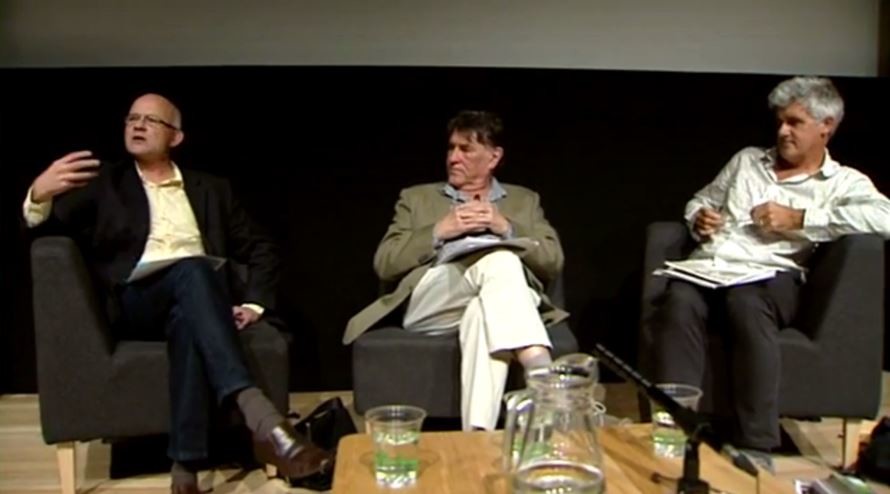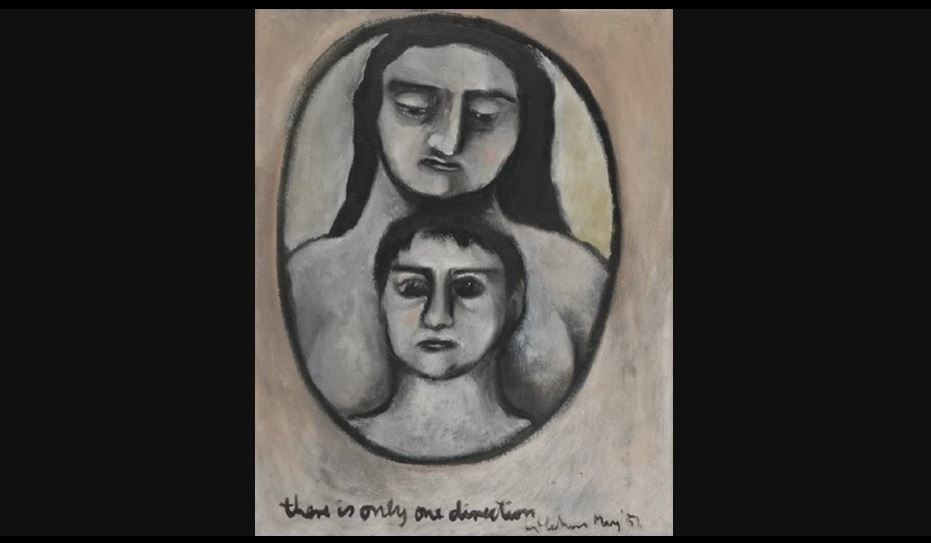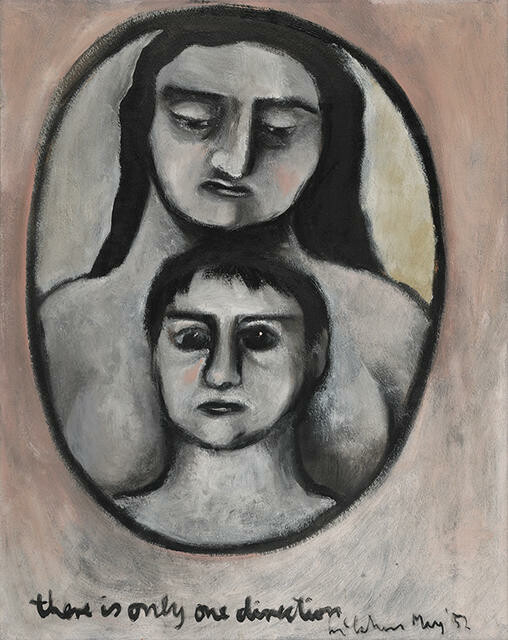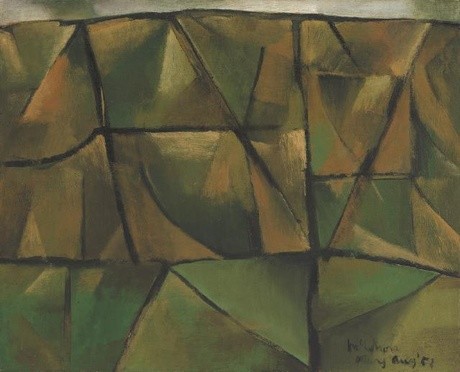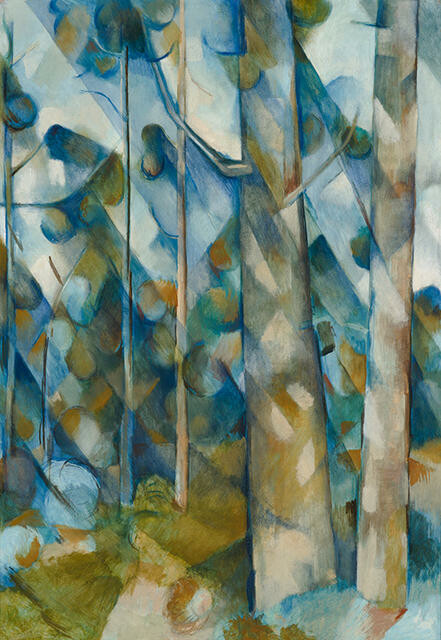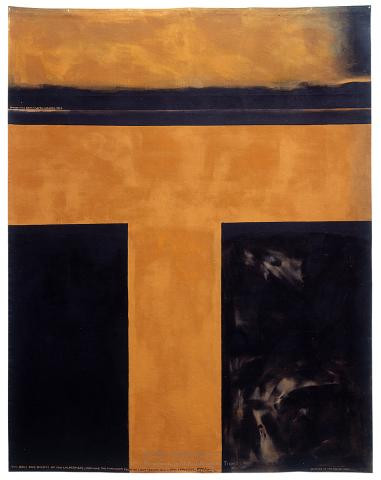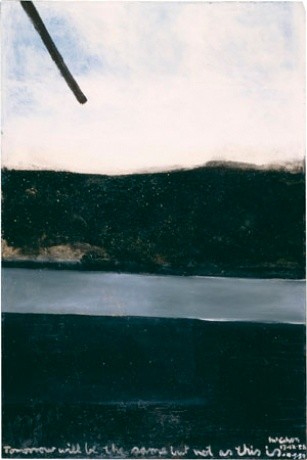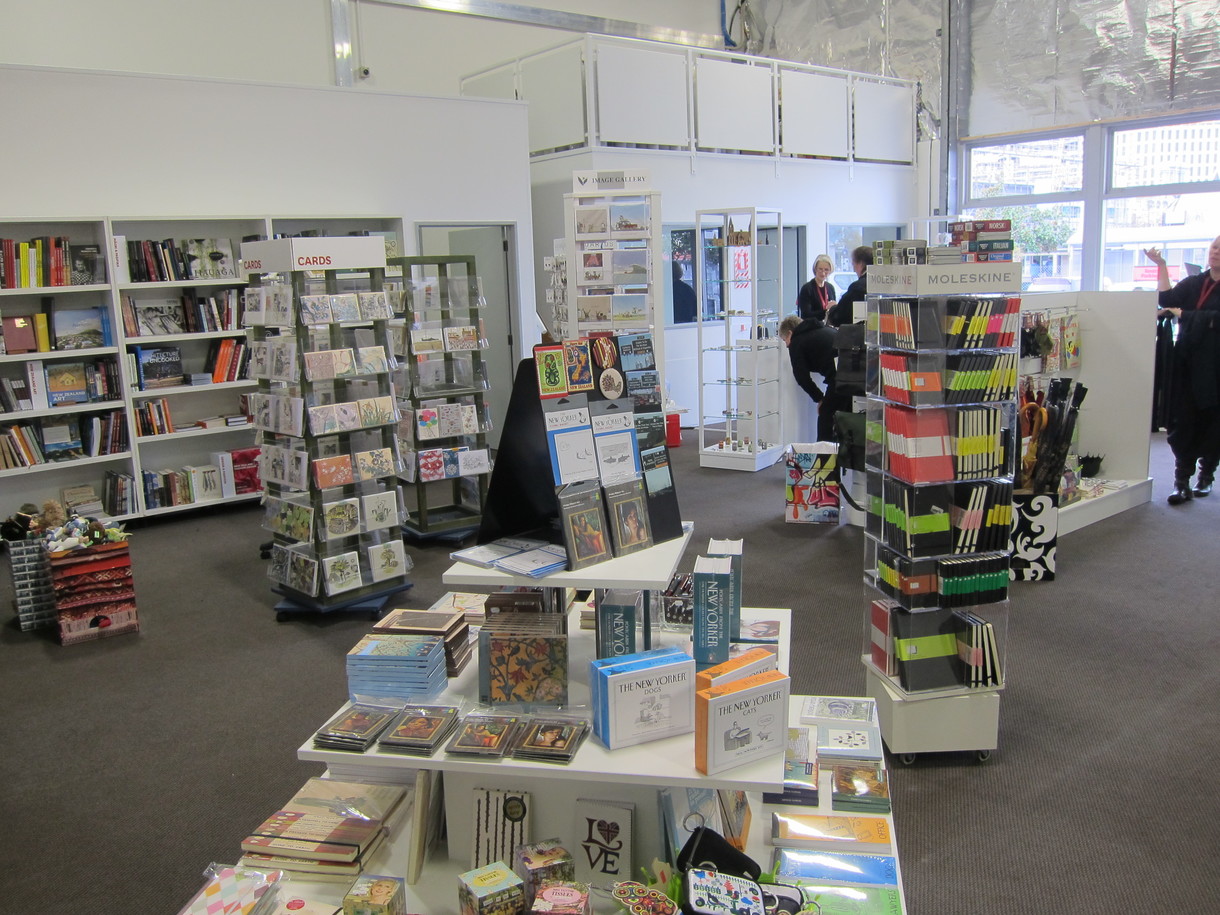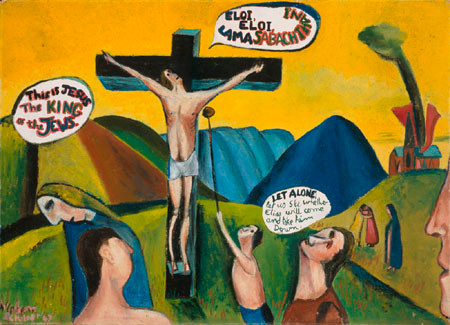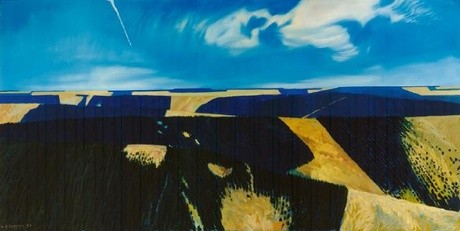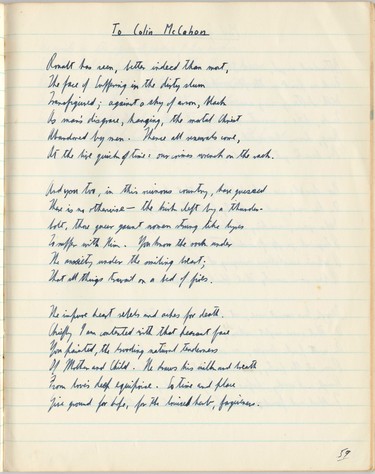
James K. Baxter To Colin McCahon 1952. From Book XVI, James Keir Baxter literary papers, MS-0704/016. Image courtesy of Hocken Collections – Uare Taoka o Hākena and reproduced with kind permission of the James K. Baxter Trust.
To Colin McCahon
James K. Baxter’s 1952 poem ‘To Colin McCahon’ is an important marker in the long and sometimes tempestuous artistic relationship the two men shared. On an immediate level, the poem is a response to McCahon’s painting There is only one direction (1952), which he presented to Jim and Jacquie Baxter to mark the birth of their daughter Hilary after they had named McCahon her godfather.
But the painting is also part of a sporadic ‘conversation in art’ between McCahon and Baxter over the next two decades about the importance and purpose of art, and the role of the artist in society. This conversation, which kicked off in various Christchurch pubs when both lived there in 1948, first took to print when Baxter used a column in Canta, the university student magazine, to defend McCahon’s work from criticism by those who didn’t appreciate his cultural influences and, often religious, symbolism.
In many ways There is only one direction is McCahon’s affirmation of Baxter’s reading, as well as the catalyst for the poem ‘To Colin McCahon’. Baxter begins the poem by noting the concern with human suffering that McCahon shared with the French artist Rouault, but recognises the unique translation of that suffering to a New Zealand frame in McCahon’s work, before discovering in the promise symbolised by the Virgin and child the possibility of salvation through ‘the bruised herb’, forgiveness. Baxter and McCahon’s conversation in art stuttered to its nadir just weeks before Baxter died in 1972, when in the poem ‘Ode to Auckland’ he castigated the Auckland Art School for admiring ‘the worst of McCahon’.
Thankfully for New Zealand art, Baxter didn’t have the last word, which went instead to McCahon’s magnificent series of works exploring and trying to understand Baxter’s literal and metaphorical journeys through the sacred spaces and cultural consciousness of Aotearoa.








